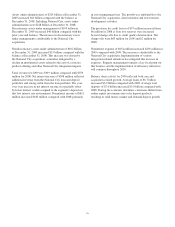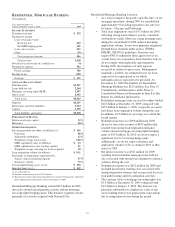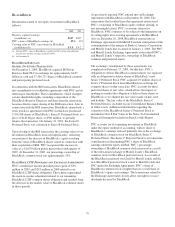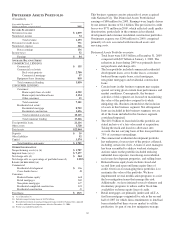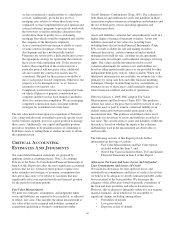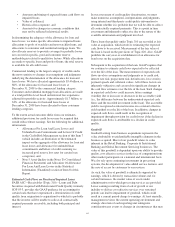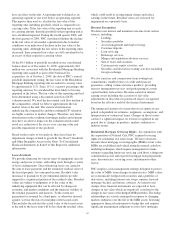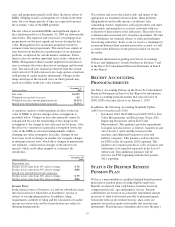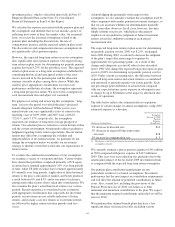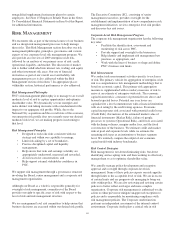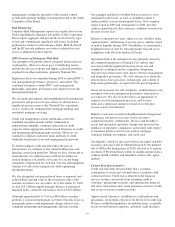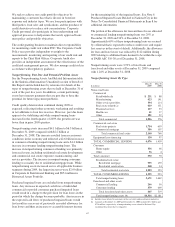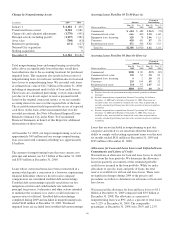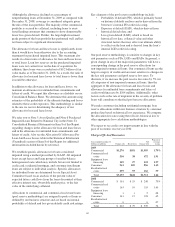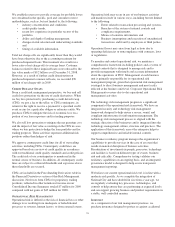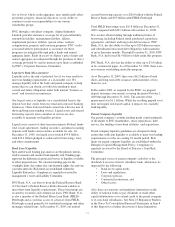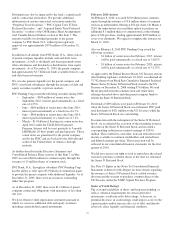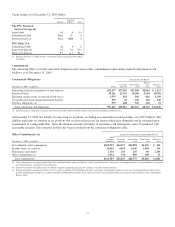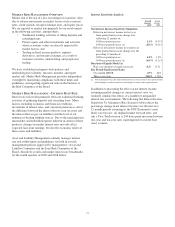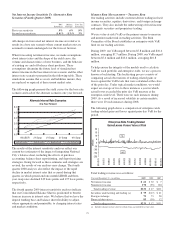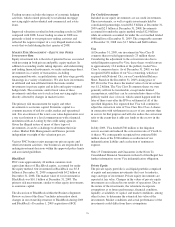PNC Bank 2009 Annual Report Download - page 70
Download and view the complete annual report
Please find page 70 of the 2009 PNC Bank annual report below. You can navigate through the pages in the report by either clicking on the pages listed below, or by using the keyword search tool below to find specific information within the annual report.management, testing the operation of the internal control
system and reporting findings to management and to the Audit
Committee of the Board.
Risk Monitoring
Corporate Risk Management reports on a regular basis to our
Board regarding the enterprise risk profile of the Corporation.
These reports aggregate and present the level of risk by type
of risk and communicate significant risk issues, including
performance relative to risk tolerance limits. Both the Board
and the EC provide guidance on actions to address key risk
issues as identified in these reports.
2009 Overview of Enterprise-Wide Risk
Our enterprise risk profile reflects continued deterioration in
credit quality, albeit at a slower pace. Contributing factors
include the adverse economy and higher credit risk portfolios
acquired from other institutions, primarily National City.
Significant effort was expended during 2009 to embed PNC’s
risk management governance, processes, and culture. The
combined enterprise is under PNC’s risk management
philosophy, principles, governance and corporate-level risk
management program.
We also made investments and strengthened risk management
governance and practices in areas where we did not have a
significant presence prior to the National City acquisition,
such as credit card, residential first mortgage lending, and
residential mortgage servicing.
Credit risk management actions undertaken across the
combined enterprise include further refinement of
underwriting standards, continued reductions in credit
exposure where appropriate and increased frequency of credit
risk monitoring and management activities. However, we
continue to originate and renew loans and lines of credit
within the boundaries of our risk management framework.
To further mitigate credit risk and reduce the pace of
deterioration, we continue to exit certain lending areas and
liquidate certain loan portfolios. Where we have chosen not to
retain the risk, it is either because it did not fit within our
desired moderate risk profile, or because we are not being
adequately compensated for such risk. Our exit and liquidation
strategy is to effectively mitigate risk while optimizing
shareholder return.
We also designated certain purchased loans as impaired, and
reduced their carrying value to the net present value of the
amounts we believe we can collect. As of December 31, 2009,
we had $15.2 billion unpaid principal balance of purchased
impaired loans, carried on our balance sheet at $10.3 billion.
Although approximately 11% of our $56 billion securities
portfolio is sub-investment grade, we believe the risk of loss is
manageable given credit impairment charges taken to date,
continued monitoring and management, and stress testing.
Our earnings enabled us to further bolster reserves to cover
anticipated credit losses, as well as strengthen capital to
further insulate us from unanticipated losses. New common
equity issued in 2009 and subsequently in 2010, provides
cushion against the risk that economic conditions worsen over
the next several years.
Relative to the prior two years, there was less volatility in the
capital markets, stabilization of security prices, and the return
of market liquidity during 2009. Nonetheless we maintained a
heightened sense of alert by reducing market risk and are in
compliance with all of our market risk limits.
Operational risk at the enterprise level is primarily driven by
the continued integration of National City and the risks
associated with the significant increase in our size and
complexity resulting from this acquisition. Integration
objectives have been met to date, due to effective management
and integration governance. We will continue to evaluate the
effectiveness of key processes, technologies and controls to
help assure performance at expected levels post-integration.
Given our increased size and complexity, modifications to our
enterprise-wide risk management governance and practices
are in process. We also view Basel II as an opportunity to
enhance our risk management practices, and we have
dedicated a significant amount of resources for the next
several years to this initiative.
Industry events have resulted in heightened risk management
governance and practices in areas such as incentive
compensation plans. Additionally, the pace and breadth of
recent and anticipated regulatory changes has increased our
emphasis on regulatory compliance, particularly with respect
to consumer products and services such as mortgage,
consumer lending, investments, and credit card.
Our liquidity, which we increased with recent equity and debt
issuances and expect will be further bolstered by the planned
sale of GIS in the third quarter of 2010, allowed us to redeem
our Series N Preferred Stock within 14 months and provides a
cushion should volatility and illiquidity return to the capital
markets.
C
REDIT
R
ISK
M
ANAGEMENT
Credit risk represents the possibility that a customer,
counterparty or issuer may not perform in accordance with
contractual terms. Credit risk is inherent in the financial
services business and results from extending credit to
customers, purchasing securities, and entering into financial
derivative transactions and certain guarantee contracts. Credit
risk is one of our most significant risks.
Approved risk tolerances, in addition to credit policies and
procedures, set portfolio objectives for the level of credit risk.
We have established guidelines for problem loans, acceptable
levels of total borrower exposure, and other credit measures.
66


